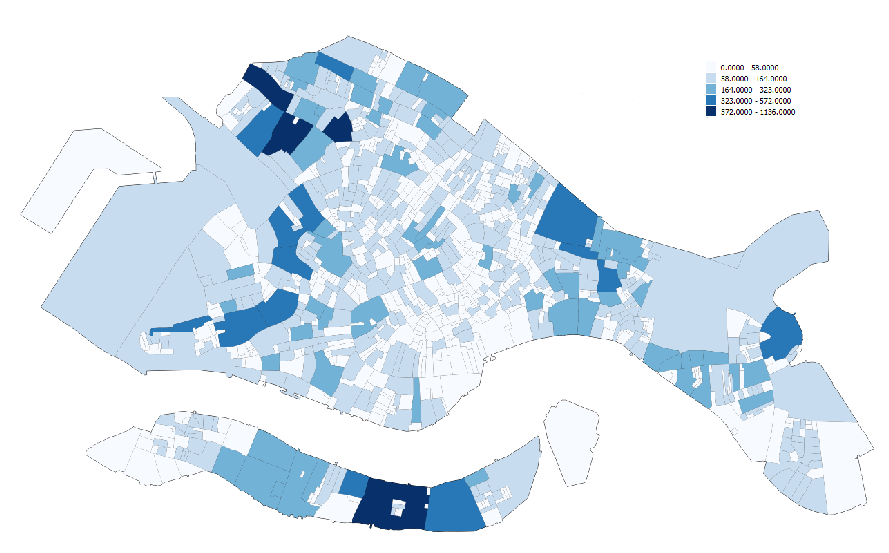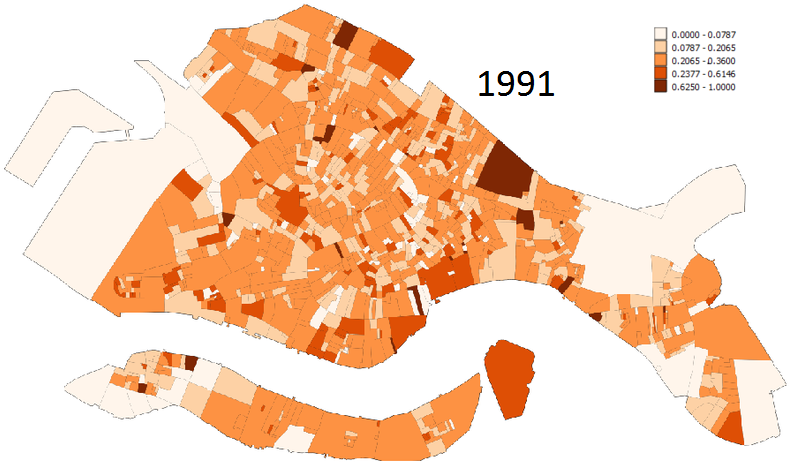Census 1991
This images are graphical representations of the population density of the city of Venice in the year 1991, broken down by census tract, as carried out by the ISTAT, or Istituto nazionale di statistica (in English: Italian National Institute of Statistics).
Census by Tract
The census is broken down into over one thousand subdivisions, each of which is a distinct geographical area below. Statistics are kept with the census tract at the smallest unit of measure, and as a result, the graphics below show these discrete chunks, coloring each one according to the appropriate statistical range.
Population
The key here indicates the number of persons living in the given census tract. It is not scaled by area.
Working Population
The key here indicates the number of persons working in the given census tract. It is not scaled by area.
Elderly Population
The key here indicates the proportion of persons living in the given census tract who are elderly (65+ years).
Characteristics of the 1991 Census
Population
Unsurprisingly, the center of Venice - particularly near the Piazza San Marco, a popular tourist destination which is very vulnerable to floods - is sparsely populated, having been taken up by commercial locations of varying sorts. Of note is an area of moderate population density in northern Cannaregio, which may be attractive due to its proximity to the Ospedale SS. Giovanni e Paolo, a large hospital. Additionally, the spatious northwestern corner of Venice is well-populated, possibly because it is out of the way of many typical tourist attractions.

